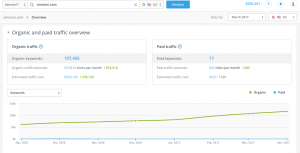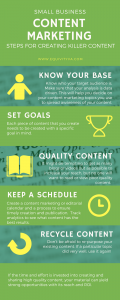— October 18, 2017

In our annual survey, we found that 73% of marketers believe that personalization should be a bigger priority in their organizations. This number is up from last year’s 64%, showing us that personalization is growing in importance to many marketers, yet internal barriers are still getting in the way. We often hear this from Evergage prospects. We hear that it “just isn’t the right time” to get started with personalization, for a variety of reasons.
Depending on your role in your organization, you could be facing objections from executive leadership or other members of the marketing team, or both. In this blog post, I’ll walk through some of the main objections we hear, and the answers we recommend sharing with your team to overcome them.
Starting with the leadership team, these are the main objections we hear:
I don’t see the value.
As with investments in most new initiatives, you may need to convince senior leadership of the value of personalization. To do so, it helps to think about the main use cases you have in mind for personalization in your own channels and to share those ideas with your leadership team. Think about the impact you expect those initiatives will achieve, and quantify it for the team. If you think that you could increase your conversion rate, by how much do you expect it to increase? What does that mean for your bottom line? For most marketers we have spoken to, even modest increases in conversion rate, retention, sign-up, upsells, page views, and average order value, etc., can have a substantial impact.
It could also help to emphasize the competitive advantage to be gained. Given the history and growth of one-to-one communication over the last 20 years, it’s clear that as a society we’re headed toward more personalization, not less. The ability to provide personalized experiences is often a competitive advantage — for now. In the future, a personalized approach will be critical to any business’ success. Explaining to your leadership team that it is important to get started now will make a difference.
We don’t have the budget.
No matter how you go about delivering personalization, you will need a budget. The tactics you take will vary dramatically depending on your organization. Do the math to determine the ROI you would receive from investing in personalization. That means determining how much you plan to spend on personalization in a year and weighing that against the expected (positive) impact to your business. We have seen that the right technology can pay for itself in spades with the improvements gained.
You could also consider shifting your marketing budget around. Many teams have a large budget dedicated to advertising and email marketing. These tactics tend to deliver interruptive and often less effective experiences for customers and prospects. Reallocating a percentage of these budgets to more seamless and personalized marketing efforts is typically well justified.
There aren’t enough resources to manage it.
Leadership may be concerned that the team does not have the bandwidth to manage a personalization effort. If adding new team members or working to develop new skills in current team members are not a near-term option, it could help to go in the “small wins” direction — particularly if you have a small team. We have found that it does not take much time (sometimes even just an hour or two a week) to plan and execute a few quick and easy campaigns that generate solid lifts in conversion rate, engagement, average order size, email capture rate, and more. If leadership sees the value of personalization and is willing to allocate some budget, but is worried about these efforts taking too much time from the team, starting small and growing your investment from there could lead to success.
Once your leadership is on board (or if you are in leadership yourself), you may still need to manage objections from other members of your marketing team. These are the few we hear most often:
I’m already overwhelmed; this will take up too much of my time.
A common complaint from small marketing teams is that they do not want another tactic to manage. While you may empathize with an over-extended team, it is up to you to convey the value that personalization can bring, explain how the benefits will outweigh the cost of their time, and determine the initiative’s priority relative to others.
Just like with senior leadership, give some thought to some of the main use cases you have in mind for personalization and consider the impact you would see from improving your KPIs. Many team members will be excited about improving the experience for customers or prospective customers. And if they are not excited by that, they may be swayed by the expected lifts — particularly if the team’s performance is measured against the KPIs.
If this objection is a concern for you as well, make sure you invest in a technology that is easy to use — one that your team will not find cumbersome or tedious to use or that does not need a lot of training to learn. The prospect of learning a new, strategic technology to add to one’s resume is often an exciting benefit as well.
We’re going through a website redesign, and we don’t have a finished product to work with.
Many marketers use a redesign of their websites, web applications or mobile apps as an excuse to avoid implementing personalization, claiming that it isn’t a good time. For some situations, that may be true. But in most cases, it is advantageous to incorporate personalization into your newly designed site or app from the beginning. You are often able to find even more uses for personalization when you’re planning to transform the baseline experience.
For example, any area of your site that you plan to be static could in fact have multiple versions targeted to different segments. You could also determine where all of your product and/or content recommendations should be placed and start testing different algorithms. Contrary to popular opinion, you and your team should begin thinking about how to leverage personalization before or during a redesign, not just afterward.
We don’t have enough existing content for personalization.
Many content-based teams are nervous that they will have to multiply the amount of content they currently have by the number of personas they want to target. But the reality is that most sites already have plenty of content that is written for different personas or stages of the funnel. That content just isn’t always targeted effectively. Personalization can be used to bring the relevant content to the forefront for each visitor on your site. For example, rather than relying on the visitor to navigate to your resources page and select the right eBook, you can recommend that content on any page of your site and when it’s most appropriate for each visitor.
Of course, implementing personalization can help you identify any content gaps you may have. But those gaps already exist, so it’s typically not essential to fill them before getting started with personalization.
Final Thoughts
There will always be objections to investing in something new, but when it comes to personalization, it’s worth it to fight for it in your organization.
Business & Finance Articles on Business 2 Community
(83)






